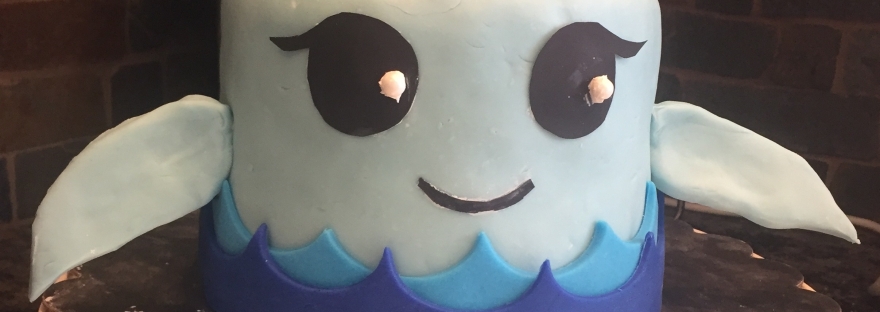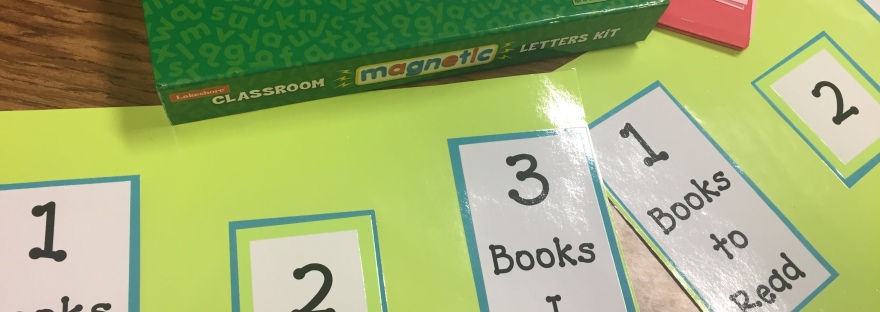“Careful the things you say, children will listen. Careful the things you do, children will see and learn. Children may not obey, but children will listen. Children will look to you for which way to turn. To learn what to be. Careful before you say, ‘Listen to me’. Children will listen.” ~Steven Sondheim
Before her eleventh birthday, my daughter became obsessed with narwhals. Now, I have no idea why, but you could suddenly find them all over the place. As a recent discoverer of Pinterest, she found a narwhal cake that she just had to have for her birthday. Since I fancy myself a baker, we watched the video complete with step-by-step instructions on how to apply the fondant and decorate this cake. It looked do-able, so off we went to the craft store to buy the various colors of fondant (one thing I was not doing was coloring my own fondant and craft stores make it extremely easy to buy fondant in every color!).
We took our bag of fondant home, baked up a chocolate cake, let it cool, then set our sights on the fondant. Needless to say, the fondant wasn’t as easy to work with as the video portrayed. We rolled it out, kneaded it again, rolled it again, kneaded, repeat, repeat. No matter how we stretched, it just looked horrible! Instead of a smooth narwhal body, it was lumpy and obviously patched up.

There was no way I could serve this thing. The decorations wouldn’t cover all the patches. The worse part was it looked as if it was sliding off! You see, there’s a thin layer of frosting between the cake and the fondant, or there is supposed to be. My frosting layer wasn’t even, which was part of the problem, as we found out. The picture doesn’t do it justice—it was truly horrendous! I threw in the towel. Told my daughter there was just no way this narwhal cake was going to work. She would have to do with a regular cake, normally decorated. Besides, we ran out of fondant, it was late, and the fondant-carrying craft store was two towns over.
I could tell she was disappointed, but at that point, I was so frustrated and at my Witt’s-end, I didn’t care. Until I stopped and thought about it for a moment. What lesson am I teaching my daughter: When things get tough, it’s okay to quit? After telling her all school year long to persevere through the hard, I’m showing her it’s okay to quit.
The verses of Sondheim’s song went through my head. I knew that my daughter was watching and learning from my actions. I didn’t want her to learn the quitting lesson from me. So, I took off my apron, drove back to the craft store to get plenty of fondant—I wasn’t going to run out of fondant this time! When we arrived back home, we reflected on what went wrong the first time. We devised a plan together, to make sure we learned from our mistakes to make our next attempt a success.
We slowed ourselves down, perfecting each step and diligently followed the plan; we thought about what happened to make it fail the first time and ensured we problem-solved to fix it this time. Our finished product turned out much better. I’m not sure it was Pinterest-worthy, but we were both proud of our efforts and think it turned out quite cute, even if we were up until midnight the night before the party! I put the finishing touches on it the next morning. As it happens, the more you work with fondant, the easier it becomes.

The narwhal cake fiasco turned into a wonderful lesson for both my daughter and me. As we encountered tough situations throughout the year, we referred back to the narwhal cake—it became a code word for us, spurring us on to continue challenging ourselves. If we could conquer fondant, we could use the same strategies to conquer other obstacles in our way. It became a story I brought into the classroom, as well. I saw how it became a valuable lesson for my daughter and thought it could be beneficial to my students, as well. In fact, I brought in more stories of how I tried the first time, it didn’t work, so kept trying until it did. With my own stories of perseverance and celebrating students’ examples, perseverance became part of our classroom culture.
In addition to my own stories, there are some great resources to help scaffold perseverance lessons. First, there’s Angela Duckworth’s book on Grit: The Power of Passion and Perseverance and Carol Dweck’s Mindset: The new psychology of success which I think ignited the emphasis on the act of teaching perseverance, or growth mindset. These books are geared for adults. I recommend A Mindset for Learning by Kristine Mraz and Christine Hertz which helps to break it down for the classroom teacher. There are also some wonderful children’s books that have come out. I’ve read both Your Fantastic Elastic Brain by JoAnn Deak, PhD and Sarah Ackerly and The Girl Who Never Made Mistakes by Mark Pett and Gary Rubinstein to my class to set up an ongoing discussion of perseverance and growth mindset. The site Class Dojo has some excellent short videos extolling the virtues of “The Power of Yet” and “Grow Your Brain” ideas which helps to break it down for elementary students using language that is easily incorporated for primary students. However, I don’t think anything supports these ideas better than your personal stories and highlighting examples of perseverance in your classroom starring your own students. Celebrating these acts will help create a classroom of students who won’t stop just because it’s hard and challenging. I hope you will find your own narwhal cake stories to share with your students and know that children are always listening and watching our actions!








 I was handed my first Regie Routman book, Invitations, during my Master’s program by my literacy professor, Chris Kline. She thought I might enjoy it as I was doing research for my thesis. This book still sits on a shelf behind my desk with all of my original sticky notes and highlights. I often look at it and remember that young, energetic teacher and think about how much more I know now. I’ve been a huge fan and voraciously devoured every new Regie Routman book which has joined that now tattered copy of Invitations on my bookshelf. Over the years, Regie Routman has become Regie to me.
I was handed my first Regie Routman book, Invitations, during my Master’s program by my literacy professor, Chris Kline. She thought I might enjoy it as I was doing research for my thesis. This book still sits on a shelf behind my desk with all of my original sticky notes and highlights. I often look at it and remember that young, energetic teacher and think about how much more I know now. I’ve been a huge fan and voraciously devoured every new Regie Routman book which has joined that now tattered copy of Invitations on my bookshelf. Over the years, Regie Routman has become Regie to me.